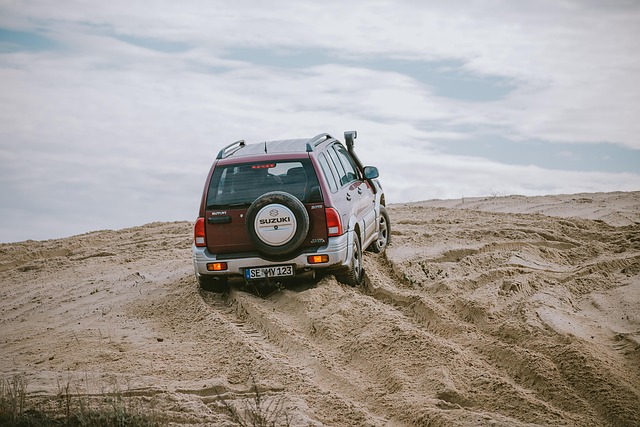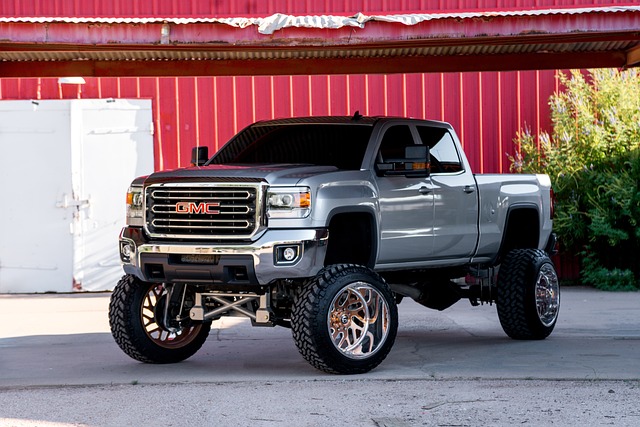Recovery lines, crucial for off-road safety, are readily available at local 4×4 shops offering expert advice and diverse gear. These specialized retailers cater to various needs with high-quality equipment tailored to terrain and vehicle types. They provide installation, maintenance, and guidance on selection, ensuring adventurers are prepared for any challenge. Regular care, including inspections, storage, and cleaning, extends the lifespan of these essential tools for navigating rugged landscapes.
“Unleash your off-road adventures with the ultimate safety net—recovery lines. This comprehensive guide explores the critical role these ropes play in extricating your vehicle from challenging terrain. From understanding their fundamentals to selecting the right type for diverse environments, we cover it all.
Learn how a local 4×4 shop can be your trusted partner in sourcing high-quality recovery lines, ensuring optimal performance and longevity. Discover installation best practices and real-world success stories from enthusiastic off-roaders. Get equipped to conquer any obstacle.”
- Understanding Recovery Lines: Essential Equipment for Off-Road Adventures
- The Role of a Local 4×4 Shop in Sourcing Quality Recovery Lines
- Types of Recovery Lines: A Comprehensive Guide for Different Terrain Challenges
- Installation and Safety Protocols for Optimal Performance of Recovery Lines
- Real-World Applications: Success Stories from Local 4×4 Enthusiasts
- Maintenance Tips to Prolong the Lifespan of Your Recovery Lines
Understanding Recovery Lines: Essential Equipment for Off-Road Adventures

Recovery lines are an indispensable tool for any off-road enthusiast, offering a safety net during unpredictable terrain. These robust lines, typically made from high-tensile strength materials, serve as a lifeline when your vehicle finds itself stuck or stranded. They are designed to be easily deployed and winched, allowing you to extract your vehicle from challenging situations. Whether it’s navigating a rugged mountain pass or extricating your car from soft sand, recovery lines provide the necessary leverage and support.
When venturing off the beaten path, visiting a local 4×4 shop is wise. These shops stock a wide array of recovery equipment, including various-length recovery lines suited for different off-road scenarios. They can offer expert advice on choosing the right gear and ensure you’re prepared for any adventure. With proper training and an understanding of safety protocols, recovery lines become a crucial asset, enabling you to tackle remote locations with confidence.
The Role of a Local 4×4 Shop in Sourcing Quality Recovery Lines

When it comes to sourcing quality recovery lines, a local 4×4 shop plays an indispensable role for off-road enthusiasts and professionals alike. These specialized retailers are well-stocked with a wide array of recovery equipment, including robust recovery lines that are designed to withstand the rigors of off-road adventures and heavy-duty towing. They often have expert staff who can provide valuable insights on choosing the right line for various terrains and vehicle types.
Local 4×4 shops serve as community hubs where enthusiasts can gather, share knowledge, and find the best gear. Their access to a diverse range of brands and models allows them to offer top-tier products that cater to specific needs. Moreover, these shops often provide customization options, ensuring that each recovery line is tailored to the unique requirements of individual off-roaders.
Types of Recovery Lines: A Comprehensive Guide for Different Terrain Challenges

Recovery lines, also known as tow ropes or winch straps, are essential tools for off-road enthusiasts and anyone tackling challenging terrain. When it comes to selecting the right recovery line, understanding the various types is crucial. Different terrains present unique challenges, requiring specific lines designed to handle harsh conditions. For instance, a local 4×4 shop might offer options like polypropylene lines, renowned for their strength-to-weight ratio, making them ideal for lightweight vehicles navigating moderate trails. Conversely, nylon lines are highly versatile and durable, suitable for heavy-duty operations and extreme environments.
Each material has its advantages; polypro lines excel in preventing snags and kinks, ensuring smooth towing, while nylon’s natural resistance to wear and tear makes it a top choice for rugged landscapes. Moreover, some recovery lines incorporate dynamic or static features, catering to varying rescue scenarios. Dynamic lines stretch under tension, absorbing shock and reducing stress on the vehicle, whereas static lines provide unwavering strength during winching operations. Choosing the right recovery line means considering the specific demands of your terrain, vehicle capabilities, and the nature of potential rescues—all easily navigated by consulting a knowledgeable local 4×4 shop expert.
Installation and Safety Protocols for Optimal Performance of Recovery Lines

When installing recovery lines, a visit to your local 4×4 shop can be invaluable for proper fitting and safety checks. These shops are equipped with expert mechanics who understand the intricacies of off-road vehicles and the specific requirements of recovery lines. They’ll ensure that each line is securely attached to your vehicle, following best practices for optimal performance and safety during challenging terrain navigation.
Safety protocols include ensuring all hardware is properly tightened, checking for any signs of wear or damage, and confirming that the lines have adequate tension. Your local 4×4 shop can also advise on important considerations like line material, length, and attachment points to suit your specific vehicle and recovery needs. Regular maintenance at these shops further guarantees that your recovery lines remain in top condition, ready for unexpected situations off-road.
Real-World Applications: Success Stories from Local 4×4 Enthusiasts

In the real-world application of recovery lines, local 4×4 enthusiasts have shared their success stories, highlighting how specialized equipment has transformed their off-road adventures. These passionate individuals, frequent visitors to local 4×4 shops, have encountered various challenges while navigating rugged terrains, from sticky mud to steep inclines. However, with the implementation of recovery lines, they’ve experienced significant improvements in safety and efficiency.
Local 4×4 shops play a pivotal role in equipping enthusiasts for their adventurous escapades. These establishments offer tailored solutions, including high-quality recovery lines that are designed to withstand extreme conditions. Through word-of-mouth recommendations and successful trial runs, many off-roaders vouch for the effectiveness of these recovery lines, making them indispensable tools for any local 4×4 enthusiast’s arsenal.
Maintenance Tips to Prolong the Lifespan of Your Recovery Lines

Prolonging the lifespan of your recovery lines is essential for any off-road enthusiast, and regular maintenance plays a crucial role in this process. A local 4×4 shop can offer valuable insights and products to keep your recovery equipment in top condition. Start by inspecting your recovery lines frequently; look for signs of wear, fraying, or damage. These issues can often be caught early, preventing more severe problems down the line.
Proper storage is another maintenance tip worth noting. When not in use, store your recovery lines in a clean, dry, and cool environment away from direct sunlight and harsh chemicals. Additionally, ensure they are properly coiled and organized to prevent tangling or twisting, which can weaken the lines over time. Regular cleaning with mild soap and water can also help maintain their integrity, removing any dirt or debris that may accumulate during off-road adventures.
In conclusion, recovery lines are indispensable for off-road enthusiasts seeking to conquer diverse terrain challenges. By understanding the types available, sourcing them from a reputable local 4×4 shop, and adhering to safety protocols during installation, you can ensure optimal performance when it matters most. Regular maintenance, as highlighted by real-world applications shared by fellow enthusiasts, further extends their lifespan, making them a valuable investment for any adventurous spirit.



